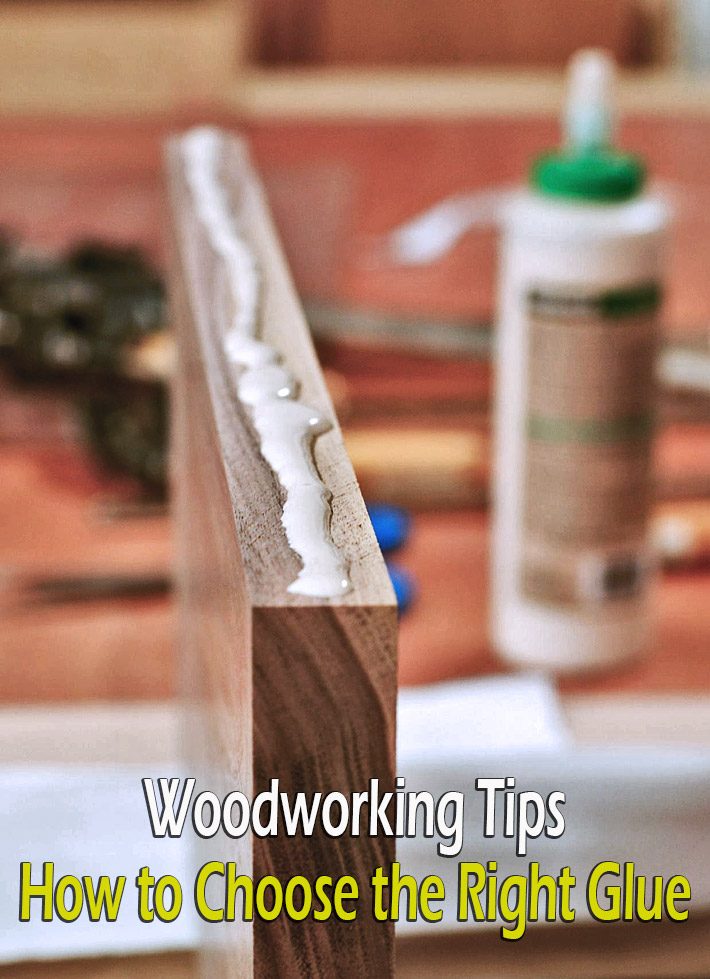
Most woodworking projects require some gluing-up. With the variety of glues on the market, how should you know which one is right for the job? The answer depends on what you are gluing up, and how the finished project will be used. Let’s take a look at some of the most popular types of glue.
PVA Glues
When I picture glue, the first thing I think of is the quintessential Elmer’s White Glue, also sometimes called “hobby and craft glue” – the kind you likely used in grammar school. This poly-vinyl acetate (PVA) glue is great for many basic woodworking projects. It’s cheap, non-toxic, readily available, cleans up with water, has a modest tack – thus allowing you to move it a bit as you clamp your project – and, once cured, is quite strong.
The first glue most people reach for in the workshop is carpenter’s glue, which is a yellow aliphatic resin that is part of the PVA family of glues. This tried-and-true staple of the woodshop has been around since the first half of the 20th century. You’ll often see this product sold as Tite-Bond, Elmer’s Carpenter’s Glue, and under other trade names. The important thing to be aware of is that even in the family of yellow wood glues, there are a variety of products with specialized uses.
Let’s take a look at the popular Tite-Bond line of yellow wood glues and how they vary:
- Tite-Bond 1: sets quickly, strong initial grab, indoor use only
- Tite-Bond 2: sets quickly, strong initial grab, water resistant, can be used indoors or out, approved for indirect food contact (such as cutting boards, bowls, etc.)
- Tite-Bond 3: waterproof, sets slowly (great for complex glue-ups), lower application temperature (great for cold workshops)
What about if you are working with very light-colored woods, or if you are planning to stain your piece? PVA glues does not absorb stain the way wood does, any place where there is glue on the surface of the work will show up clearly as a glued patch. You’ll want to plane, scrape, or sand off the excess glue. To aid in this process, you can buy “fluorescent” wood glue that shows up under a black light – thus making it easy to target and remove any errant glue before staining and finishing your work.
The one big drawback to PVA glues is that they are not reversible – meaning once cured, the glue joint cannot be removed for repairs. New glue does not stick well to old cured glue, so you would not want to use PVA glues on a joint that might need to be repaired in the future.
While wet, PVA glues clean up easily with water.
CA Glue

Cyanoacrylate (CA) glue is often referred to by one of its trade names: Crazy Glue, SuperGlue, and others. It is most often used for small repairs, particularly when carving or turning. This glue dries quickly and forms a stiff, plastic-like bond. The liquid form of this glue can often run, but the glue is also available as a gel that stays in place better.
Epoxy
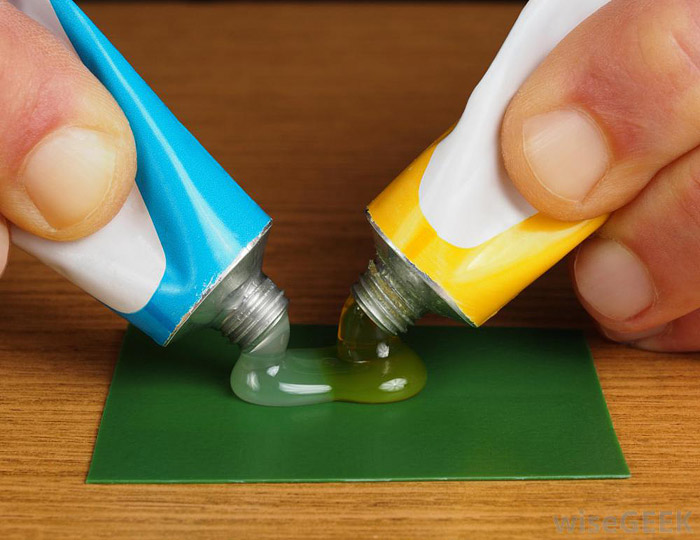
Epoxy is a two-part glue that is mixed together and can handle a multitude of projects. Epoxy is available in various forms that allow it to cure fast or slow, and in a wide range of temperature and moisture conditions. It is often used to fill gaps or to consolidate damaged wood, for example. This tough glue is also resistant to rain/weather, UV light, and heat, and adheres well to a wide range of substrates. When using epoxy, work in a well-ventilated area, mix the glue in small batches, and be aware of how much of each resin you are mixing together.
Polyurethane Glue
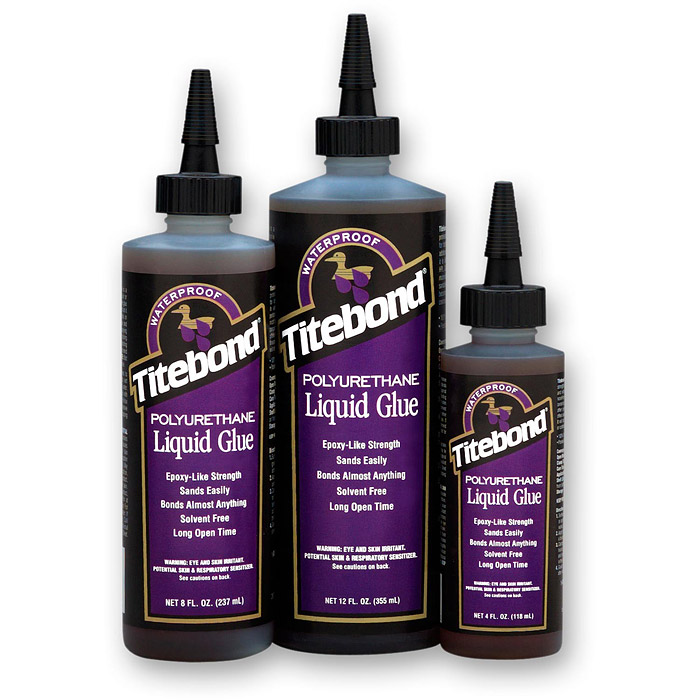
Polyurethane glue is very durable and is often referred to by the trade name “Gorilla Glue.” It cures in the presence of water. You’ll want to wet the two mating surfaces before applying this glue. It bonds well to wood and many other materials, including plastic, metal, fabric, and others. This glue tends to expand as it cures, and is very hard to remove, so make sure any glue squeeze-out is quickly removed or directly applied to a place where it will not be seen. This glue is a great choice for outdoor furniture applications and places where you need a very strong bond.
Hot Melt Glue

Hot melt adhesive (HMA) or simply “hot glue” is great for temporary jigs and fixtures. The glue comes in a cylindrical stick that is fed through a “glue gun” with an electric heating element that melts the glue. As you pull the trigger on the gun, glue is dispensed. This thermoplastic glue cools and sets quickly, and can be removed either by popping it off or by heating it with a heat gun or a similar heat source.
Hide Glue
Hide glue is made from rendered animal collagen and is one of the oldest known forms of adhesive. Traditionally, “hot” hide glue comes in small granules that are melted in a double boiler and applied while warm. As the glue cools, the bond gets stronger. Once cured, this glue produces a strong bond that is on par with modern PVA glues.
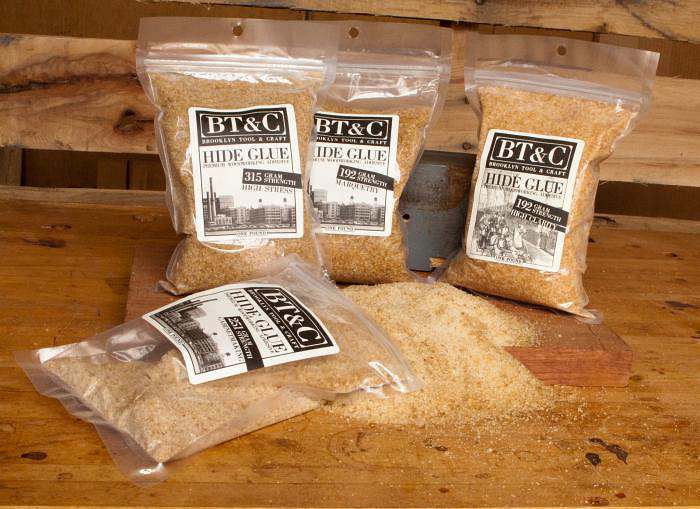
This glue has been making a resurgence in some traditional woodworking circles because it has a lot of desirable properties: it’s non-toxic, it can be stained, it has strong initial tack that can be achieved via a rub joint (rub two coated pieces together and they will stay together), and it is available in several gram strengths (higher gram strength equals stronger glue joint) and color grades.
This is a great choice for general furniture, musical instruments, and veneer work. High-quality hide glues does not smell bad and are available from several reputable suppliers. Once cooled, the unused glue can be reused if reheated. If you don’t want to invest in a double boiler, there are some manufacturers like Old Brown Glue and Tite-Bond that sell a liquid hide glue that can be used at room temperature, has most of the same properties of hot hide glue, and has a longer open (working) time.
The biggest reason for hide glue’s popularity is its reversibility; if you apply heat to the joint, the glue will loosen. This has allowed many antique pieces to be repaired and restored over the years. If you are building your opus or your next family heirloom, I suggest giving hide glue a try.
Gluing Tools
Once you pick the correct glue for your project, you’ll also want to make sure you have the correct tools to apply it. Some glues can be applied straight from the bottle onto your project. These include CA glue and polyurethane glue. Other glues, like epoxy, are best applied via a disposable item like a wooden tongue depressor. The most common wood glues – the PVA family and hide glue – can be applied with more control and ease with the help of some simple tools:
- Metal Spatula
- Plastic Brushes
- Comp
- Specialty Bottles
- Bottle with Roller
Some of the more specialized bottles can aid in quickly applying glue to a wide surface (as is done with the roller) or into specialized joints, such as the biscuit glue bottle on the top left. If you wipe down or wash off your tools with water while the glue is still wet, you’ll have an easy cleanup. You don’t need to go out and buy all of these specialized tools unless you plan to do a lot of this work. Often, a simple disposable brush, a reused bit from your kitchen junk drawer, or a bit of cardboard can get you on the way to solid glue application.
Wood Glue Pointers:
- Buy the wood glue that best suits your project
- For prepared glue in a bottle, buy smaller containers and buy it as you need it; this way, your glue is always fresh
- Mix sawdust in with your glue (this will help if you have to stain your project)
- When you open your bottles of glue, write the date on them; this will help you know how fresh they are
- Store hide glue in a cool place or a refrigerator when it is not needed
- You can heat up liquid hide glue in a double boiler (in its bottle) to get some of the properties of warm hide glue
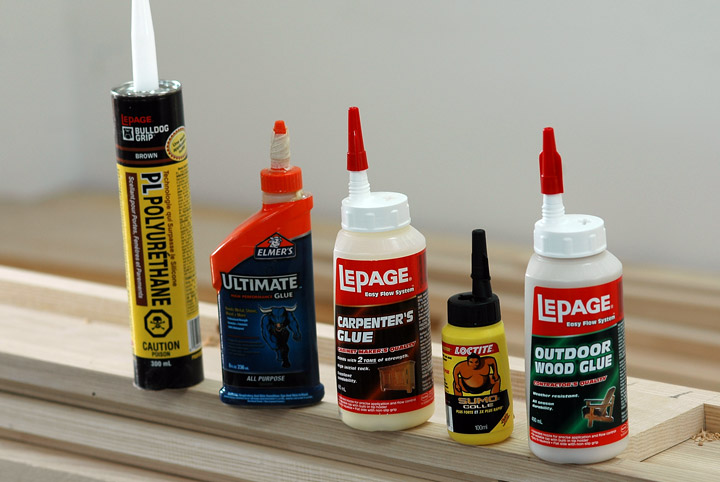

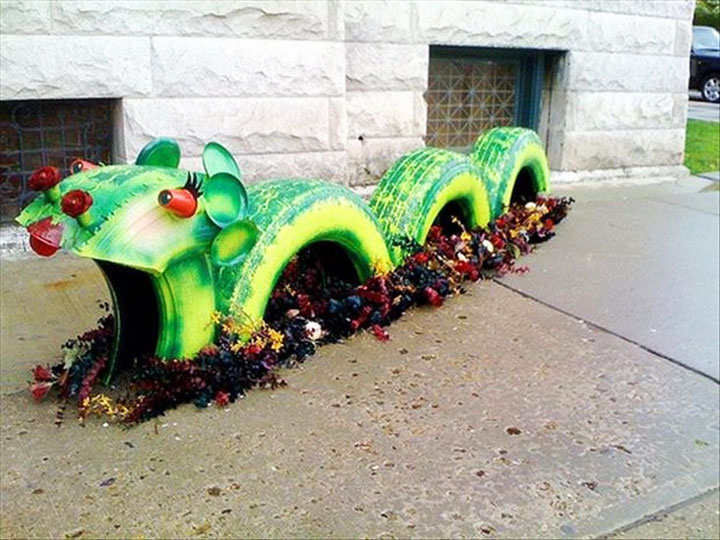

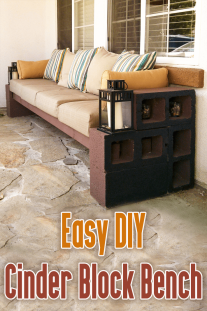
Leave a Reply